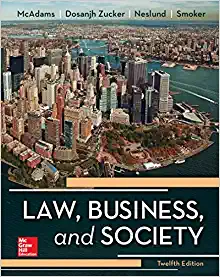Question
1.Depreciation of noncurrent operating assets is an accounting process for the purpose of a. reporting declining asset values on the balance sheet. b. allocating asset
1.Depreciation of noncurrent operating assets is an accounting process for the purpose of
a. reporting declining asset values on the balance sheet.
b. allocating asset costs over the periods benefitted by use of the assets.
c. accounting for costs to reflect the change in general price levels.
d. setting aside funds to replace assets when their economic usefulness expires.
2.Which of the following principles best describes the conceptual rationale for the methods of matching depreciation expense with revenues?
a. Partial recognition
b. Immediate recognition
c. Systematic and rational allocation
d. Associating cause and effect
3.The composite depreciation method
a. is applied to a group of homogeneous assets.
b. is an accelerated method of depreciation.
c. does not recognize gain or loss on the retirement of specific assets in the group.
d. excludes salvage value from the base of the depreciation calculation.
4.The sum-of-the-years'-digits method of depreciation is being used for a machine with a five-year estimated useful life. What would be the fraction applied to the cost to be depreciated in the fourth year?
a. 4/5
b. 2/5
c. 4/15
d. 2/15
5.In order to calculate the third year's depreciation on an asset using the sum-of- the-years'-digits method, which of the following must be known about the asset?
a. Its acquisition cost
b. its estimated residual value
c. Its estimated useful life
d. All the above must be known.
6.Which of the following statements is the assumption on which straight-line depreciation is based?
a. The operating efficiency of the asset decreases in later years.
b. Service value declines as a function of time rather than use.
c. Service value declines as a function of obsolescence rather than time.
d. Physical wear and tear are more important than economic obsolescence.
7.A method that ignores residual value in calculating periodic depreciation expenses in the earlier part of an asset's useful life is the
a. productive-output method.
b. group composite method.
c. sum-of-the-years'-digits method.
d. double-declining-balance method.
8.Which of the following depreciation methods applies a uniform depreciation rate each period to an asset's carrying amount?
a. Straight-line
b. Units-of-production
c. Declining-balance
d. Sum-of-the-years'-digits
9.When does the cost of land affect an entity's profit or loss?
a.As the asset is used through periodic charges for cost allocation
b.When the asset is revalued upwards
c.When the related revaluation is recognized on a piecemeal basis as the asset is used
d.When the asset is impaired or when it is sold above or below its carrying amount
10.Which of the following reasons provides the best theoretical support for accelerated depreciation?
a. Assets are more efficient in early years and initially generate more revenue.
b. Expenses should be allocated in a manner that "smooths" earnings.
c. Repairs and maintenance costs will probably increase in later periods, so depreciation should decline.
d. Accelerated depreciation provides easier replacement because of the time value of money.
11.When the estimate of an asset's useful life is changed,
a. depreciation expense for all past periods must be recalculated.
b. there is no change in the amount of depreciation expense recorded for future years.
c. only the depreciation expense in the remaining years is changed.
d. None of the above is true.
12.The sale of a depreciable asset resulting in a loss indicates that the proceeds from the sale were
a. less than the asset's current market value.
b. greater than the asset's cost.
c. greater than the asset's carrying amount.
d. less than the asset's carrying amount.
13.On January 1 Stockton Company acquired a machine with a four-year useful life. Stockton estimates the residual value of the machine will be equal to ten percent of the acquisition cost. The company is debating between using either the double-declining-balance method or the sum-of-the-years'-digits method of depreciation. Comparing the depreciation expense for the first two years computed using these methods, the depreciation expense for the double-declining-balance method (compared to the sum-of-the-years'-digits method) will match which of the patterns shown below?
First year Second year
a. LowerLower
b. LowerHigher
c. HigherLower
d. HigherHigher
14.Which of the following utilizes the straight-line depreciation method?
Composite DepreciationGroup Depreciation
a. YesYes
b. Yes No
c. No Yes
d. No No
15.A depreciable asset has an estimated 15 percent salvage value. At the end of its estimated useful life, the accumulated depreciation would equal the original cost of the asset under which of the following depreciation methods?
Productive-OutputSum-of-the-Years'-DigitsDouble-Declining-Bal.
a. Yes NoNo
b. No NoNo
c. No YesNo
d. Yes Yeses
Step by Step Solution
There are 3 Steps involved in it
Step: 1

Get Instant Access to Expert-Tailored Solutions
See step-by-step solutions with expert insights and AI powered tools for academic success
Step: 2

Step: 3

Ace Your Homework with AI
Get the answers you need in no time with our AI-driven, step-by-step assistance
Get Started


